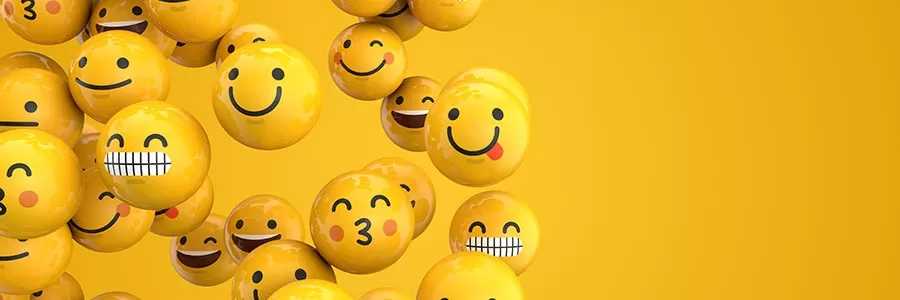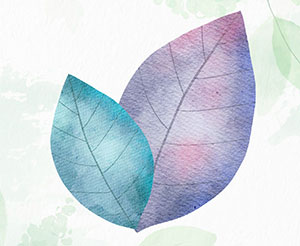Call-to-action buttons, discounts, and trust seals are just a few methods you can use on your site to increase the conversion rate by website Conversion By Using Images
What about images? Research has repeatedly proven that including the appropriate photos on your website could influence your customers’ purchase decisions.
Images are the foundation of digital storytelling and efficient online marketing. A photo is worth more than a thousand words, they claim. Regarding eCommerce or website design, making sure your content is visually appealing could mean the difference between just a few clicks or an influx of new customers.
However, how do you ensure that the visuals on your site inspire people to engage? How do you make your content stand out and communicate powerful messages without overwhelming other elements of design?
This guide explains the basic principles of using images to boost your site’s conversion rate. By following these easy tips, you can aid in turning browsers into customers.
However, how do you ensure that the visuals on your site inspire people to engage? How do you make your content stand out and communicate powerful messages without overwhelming other elements of design?
This guide explains the basic principles of using images to boost your site’s conversion rate. By following these easy tips, you can aid in turning browsers into customers.
How do you make use of these Visual Assets to your Advantage?
Images can help break up the text, provide interest, and clarify your point. However, not all images should be placed on your website, particularly for better conversions. You need to think strategically about your web design to maximize the ideas you use. Here are some suggestions for using images on web pages to your Advantage
1. Real-Life Photos That Help Explain the product or service you offer.
We are all visual creatures. We are drawn to images that are relatable at a deeper level. It is why adding images from real life to your website could be an effective tool for conversion.
With images showing the product in use, you will provide visitors with a clear understanding of what you offer and how it could benefit them. If you add the human element – for instance, photographs of real customers using your product or service. These images are even more successful.
Take the product photography of MADE, for example. MADE doesn’t just publish images of the product, specifications, and prices. It takes it a step distant by showing its effects in real-world environments. In illustrating how the bed would look when decorated, MADE has helped its buyers make a choice. It’s not only attractive and stylish; however, it also can assist new homeowners in establishing an aesthetic for their space.
The real-world and user-generated images always have the edge since it allows users to imagine what they might buy. Utilizing these images will establish a bond between your customers and your company and help turn visitors into customers.
2. Images should emphasize your distinctive Selling Highlights
A website acts as an open-air storefront for your company. The photos you upload will highlight your distinct strengths. For example, assume you provide assistance like home cleaning.. If that’s the scenario, your website must include before and after photos of the houses you’ve cleaned to prove your claims.
The images must look professional and convey your business’s uniqueness. Sharing photos showcasing your distinctive advantages will help boost conversions to your site.
The clear and concise image of Unbounce’s website is clear and concise. Unbounce’s website clearly states the purpose of the business and what you can expect. By making this placeholder clear, Unbounce has highlighted its USPs without making them too obvious.
3. Use Pictures that are about your Visitors, and less about the Product
One of the most effective methods to make sure that your website’s images are in line with your conversion objectives is to keep the focus on your visitors. Through demonstrating what customers will gain from your business by using images to create an emotional connection with them that can motivate them to act.
For instance, if you offer a service to aid someone in saving time, you can use an image of someone having fun instead of a picture or product. It will show the viewer how your company can benefit their lives and increase their chances of taking action.
This image of Conversionlab effortlessly explains what the company offers and the advantages it will give the brand. Instead of sticking to standard design elements, this site added a personal touch to its visuals to create a more accessible.
4. If your images evoke their Emotions, you win!
Inducing people to feel something upon visiting your website is an effective device that many companies do not use. Evoking emotions with images on your website creates an emotional connection with your site’s visitors and increases the chance they’ll decide to take the desired action.
After all, we are more likely to change our minds when strongly influenced by something.
Consider this: if you’re contemplating buying an item, however, you do not have a feeling of trust in the business, you’re less likely to pay your hard-earned money. But If you feel you’re familiar with and trust the company, you’ll be more likely to buy from them.
How can you utilize these strategies to gain an Advantage? Start by focusing on creating images that are resonant with your intended public. What kinds of images do they most likely react to? Then, ensure that those images are of a high standard and professionally developed. Visuals that are poorly designed and executed can only make people turn off.
Take a look at this image and look at this placeholder Zillow. It’s bright and filled with smiles and photos of a couple seated in front of their home. People are happy with how it is serene and beautiful when people view this image. Because different colors can trigger various emotions, the ability to evoke positive and negative emotions with visuals can be an effective tool to reach your goals in conversion.
5. Connect Your Brand Voice
Images you put on your website can convey much about your brand and create a particular mood or feel if you’d like your website to give the impression of elegance and luxury, pick elegant and sleek images.
However, If you’d like your website to be able to convey an unpretentious and casual style, inviting and warm images will work better. In both cases, it’s crucial to highlight the psychology of color and choose pictures that complement the overall theme of your website conversion by using images.
Check out this image on this page on the St. Ives website. It’s an amalgamation of bright hues and elements instantly attracting the user’s attention. Because St. Ives products have attractive packaging and the brand mood board is quite colorful, this placeholder is perfect for this case.
6. Choose high-quality images – Cheesy Stock photos won’t make your brand Pop
Would you purchase an item from a company that uses photos of their products to let you understand what they are selling? Do you want an online site packed with stock photos of generic quality?
We’re sure you’ll like the latter since businesses that use genuine, high-quality images are viewed as more reliable and trustworthy. On the other hand, companies that use standard stock images are frequently considered to be unprofessional or cheap.
Check out this hilariously relatable photo made by Muzzle, the notification blocker application. This site shows annoying notifications on one side, which may appear while another person is using your smartphone or taking pictures of your phone. Instead of declaring, “we’ll do this, this, and so on,” Muzzle directly depicts its primary USP, i.e., blocking notifications. It’s a good look!
It is essential to avoid generic stock images. Images and choose custom images to be used on your site’s images to increase conversions. It isn’t to say that stock photos aren’t a must. Finding high-quality stock images that represent your company can help save time and effort, something we all would like.
Also, you should use images pertinent to your products, whether they’re your clicks or stock photos of high quality. Relevant images can make your website more appealing and assist you in establishing trust with potential customers.
7. Don’t use Images Images as Only Placeholders
Your website is a canvas, and it’s your job to make it a place to display engaging images and encourage your visitors. Remember that putting any image you like on your site isn’t enough. Like you wouldn’t use the abstract painting in a commercial setting, don’t place any image on your site.
Images can stir emotion, convey meaning and create a connection with the viewer’s mind. A photo of a smiley baby instantly gives the idea of joy. However, an image of a depressing landscape could convey a feeling of despair or loneliness. A photograph can communicate the same thing that words cannot say in a single second. It’s the reason every image needs to be used to communicate your message.
Closing Up
Images are an effective way of attracting attention and quickly delivering information. When dealing with images on website conversion by using images that follow color psychology and techniques to draw attention will help you achieve higher conversion rates.
Research has shown that warm hues such as orange and red have the highest chance of drawing viewers’ attention, while cool colors such as blue and green tend to be calm and tranquil. Regarding image placement, the public is likelier to see images over the fold below.
Using images that contrast with other elements of your website’s layout will attract attention to your product and increase conversion. Therefore, instead of filling your website with random pictures, know how visuals work and then use the power of visuals to benefit your business.
website Conversion By Using Images, website design, website development,seo services, digital marketing services






Leave a Reply